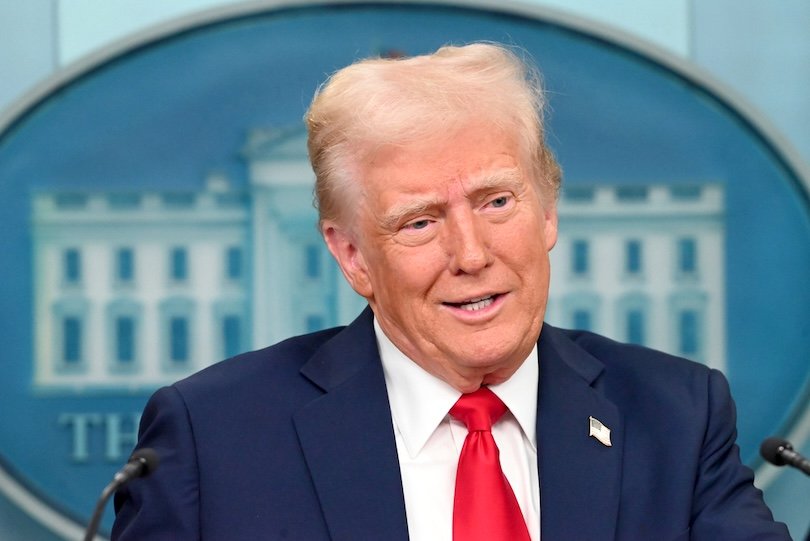In July, the BRICS had their 2025 summit in Rio de Janeiro. A few days after a summit, Donald Trump used his social media, Truth Social, to threaten those who want to join the BRICS. Amid his tariff threats, the US president affirmed that states participating in the BRICS’ “anti-American policies” would face 10% tariffs. A few weeks later, Trump announced a 50% tariff on imports from Brazil, reportedly in response to judicial prosecutions against Jair Bolsonaro. This week, he announced 50% tariffs on products coming from India – justifying the tariffs because of India’s imports of Russian oil and arms.
In Brazil and India, the reactions have been quite similar. Their respective leaders, President Lula da Silva and Prime Minister Narendra Modi, have assertively refused to follow a servile path. Both claimed that Trump’s tariffs are unacceptable foreign interference and an attack on their countries’ sovereignty. Lula da Silva said that he will not humiliate himself to get a deal with the US. Even in highly polarized Brazil, the majority of public opinion seems to support Lula da Silva’s claims. Meanwhile, in India, Narendra Modi said he is ready to “pay the heavy price” to safeguard India’s interests. Whether Trump truly intended to weaken the BRICS, his policies are having the opposite effect. The US president is uniting the group at a moment when they were facing significant challenges.
The BRICS have never been a completely harmonious group in terms of their international interests and positioning. India and China have a long-standing rivalry in Asia. India has long viewed China’s proximity to Pakistan, its primary foe, with suspicion. For decades, the country worked as a force to counter China’s expansion in South Asia, including in the Indian Ocean. Brazil, India, and South Africa have consistently sought to maintain a non-aligned stance, refusing to be entirely aligned with Russia in its tensions with the West. For instance, despite refusing to impose sanctions on Russia, Brazilian presidents have called for settling the conflict.
With the recent expansion of the group, the BRICS have faced new challenges due to internal divergences of interest. The entrance of Iran posed a problem in the group’s consensus on the situation in Gaza. Iranian Minister of Foreign Affairs, Abbas Araghchi, has affirmed that his country does not agree with the two-state solution in Palestine, as defended in the 2025 BRICS declaration. Iran also has significant rivalries with the United Arab Emirates, including divergent interests in Yemen. The UAE is another new member that joined the BRICS in 2023. Beyond the political challenges posed by Iran’s presence, Egypt and Ethiopia also have some regional rivalries, with diverging positions in Ethiopia’s tensions with Eritrea. If Brazil, India, and South Africa were already cautious about adopting a clearer anti-US positionality through the BRICS, Indonesia, the UAE, and Saudi Arabia are other new BRICS members that maintain good relations with the US.
BRICS is a group based on consensus. With rising divergences within the group, some expected that more contentious matters would hardly advance within the group. Those policies with more potential to create polemics with the US would move forward more slowly. A notable example is the BRICS’ claims to supplant the dollar in international trade. In 2023, Brazil, with Russia’s support, led the proposal to evaluate the creation of a BRICS currency for intra-group trade. India has cautiously pushed back such a proposal, affirming that it preferred to trade in its national currency. Above all, India did not want to take a step that could create problems with the US because of the BRICS currency.
Therefore, Trump’s actions demonstrate that he is significantly misunderstanding the group and, more importantly, the current intra-BRICS dynamics. While India and, to a lesser extent, Brazil worked as forces that attempted to maintain the group without a clear anti-US stance, imposing tariffs on these countries will lead them to lose the fear of offending the US’s sensibilities. While the BRICS currency seems improbable to advance, a BRICS payment system becomes even closer to reality. Seeking to create an alternative to SWIFT, the 2025 declaration affirmed support for the BRICS Payment Task Force and the intention to establish such a financial system. Whether India has worked as the cautious partner within the group for decades, the 50% US tariffs will potentially sever the ties that have inhibited India from supporting policies that go more assertively against the US’s interests.
Not surprisingly, Lula da Silva has recently affirmed that he intends to discuss Brazil’s responses to Trump’s tariffs with his BRICS partners. With increased animosity towards its North American neighbors, Brazil will likely turn to new commercial partners. The same can be said of India. Despite the country’s geopolitical rivalry with China, the two Asian giants have a robust commercial partnership. China is India’s second-largest commercial partner, surpassed only by the US. With the new US tariffs, China will gain even more economic influence over the country.
Considering the challenge of creating consensus within the BRICS since its expansion, Trump’s tariffs may serve as a compelling incentive to unite the group and to propel its cooperation. His attempts to “punish” Brazil and India may potentially distance them from the US. The strategy of treating allies as adversaries may sometimes be effective (as suggested by the European Union’s acceptance of US terms to reduce tariffs). However, some allies, such as Brazil and India, may not accept such behavior.
Further Reading on E-International Relations

